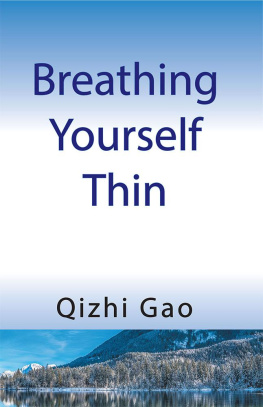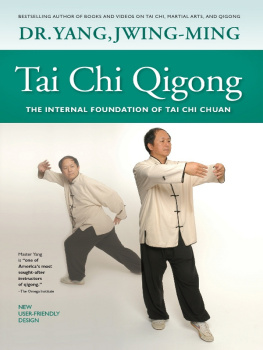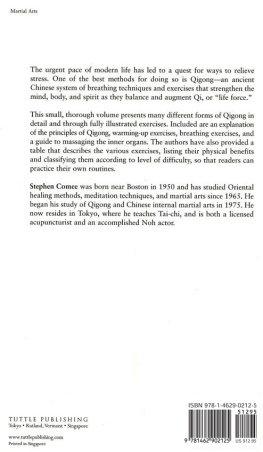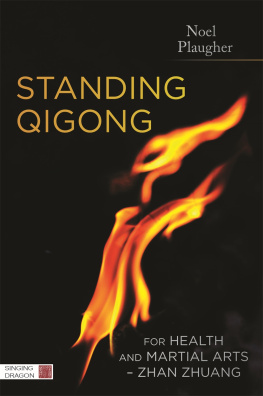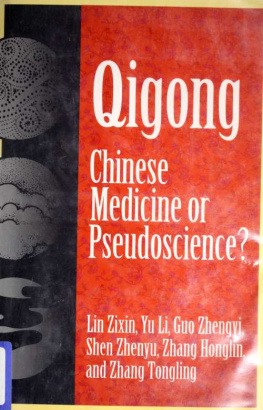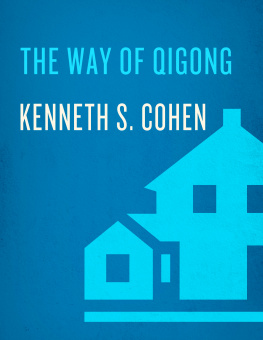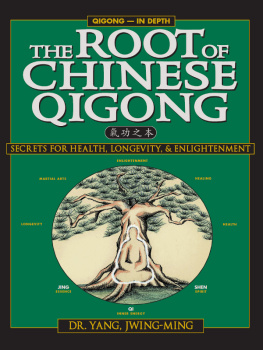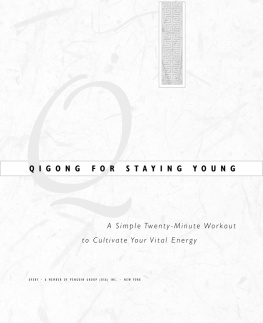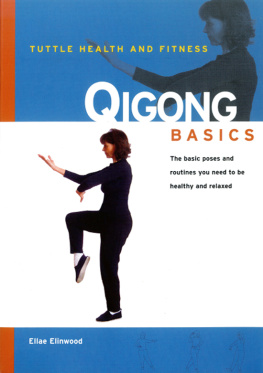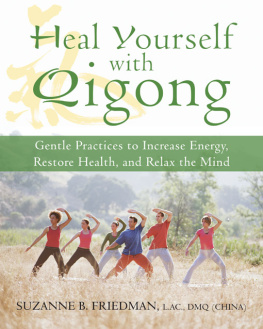Breathing
Yourself Thin
Qizhi Gao
Copyright 2016 by Qizhi Gao.
ISBN: Hardcover 978-1-4797-3410-8
Softcover 978-1-4797-3409-2
eBook 978-1-4797-3411-5
All rights reserved. No part of this book may be reproduced or transmitted in any form or by any means, electronic or mechanical, including photocopying, recording, or by any information storage and retrieval system, without permission in writing from the copyright owner.
Any people depicted in stock imagery provided by Thinkstock are models, and such images are being used for illustrative purposes only.
Certain stock imagery Thinkstock.
Rev. date: 04/22/2017
Xlibris
1-888-795-4274
www.Xlibris.com
538247
CONTENTS
Youve decided to Change Your Life, Lose Weight, make your Health Priority Number One. This is no easy task, but Dr. Gao will help you attain your goals. Ive known Dr. Gao for the past 15 years as my instructor, caregiver, colleague and friend and can attest, first hand, to the results revealed in this book. Why wait? Start your new life now!
Kevin Rieg MD
Special thanks to Dr. Loretta Forlaw, PhD, and Dr. Sandra Wilks, DOM, who helped to accomplish this book. As Bigu Qigong instructors, they offered many valuable suggestions. Also thanks to all my Bigu Qigong instructors, Bigu Qigong students, and friends who helped with proofreading and typing. Here is a list of only a few: Tom Overholser, Sandy Evenson, Pam Robinett, Leigh Anne Petersen, Laurinda Wade, Steve Wenke, Madeline Norland, Aliesa George, Bill J. Hawks Jr., Aimon Kopera, Teresa LaCoss, Angela Pottebaum, Jamie Tabor, Yee-Meii Wong, Peggy Case, Nance Tegan and many more. A big thanks to Linda R. Parsons for the final proofreading and editing. And last, I want to thank my lovely wife, Carrie. Without the support and encouragement from her and all my friends, I would not have been able to finish this book.
The philosophy of this century is the common sense of the next.
from a fortune cookie
In 1996, I taught a program for Qigong instructors that included both classic and modern Qigong exercises for the purpose of prevention and treatment of disease. At the end of the program, one student said to me, Dr. Gao, we learned so much on Qigong in this class from common disease to cancer. But we didnt learn how to help weight problems, which more than 50 percent of people are overweight in this country. So I decided to share Bigu Qi gong.
Bigu Qigong is a Qigong exercise that harmonizes the mind and regulates breathe with certain body postures to achieve hunger control and improve the function of internal organs. Bigu Qigong is easy to learn and very effective for the goal of achieving and maintaining optimal weight without any side eff ects.
I conducted my first study of Bigu Qigong on twelve volunteers. The study results were really encouraging, as I expected, and I presented them at the Third World Conference on Medical Qigong in Beijing, China, in 1996. The result was as fol lows:
[For the twelve subjects] in the two-week study, there was a significant mean weight loss of 11.2 pounds (5.06 kg) (p<.0001); mean weight loss per day was 0.9 pounds (0.41 kg).
I conducted a second study in 1999.
At the conclusion of the two-week study, 58 of 74 attended more than 10 classes. There was a mean weight loss of 5.7, 5.69 and 7.66 pounds for subjects from the normal weight group, the overweight group and the obesity group respectively. Even 16 of the 74 who attended only 6 of the classes on the average still lost 2.5, 2.6 and 3.44 pounds, [in each] group respectively.
The subjects each reported a significant increase in energy levels post exercise for nine of the thirteen days. Hunger levels were significantly reduced ten of thirteen days. Blood pressure did not significantly change between pre- and post-measures.
Weight management classes utilizing Bigu Qigong were offered at my clinic. Class participant results were consistent with study participant results. A local newspaper reported the results for one such class participant in June 1999. The article said, She lost 18 pounds during the two weeks and continued to lose afterward . She hasnt regained any of the weight.
To date, thousands of people have learned Bigu Qigong through my classes, and the minimum average weight loss was six pounds over the two-week period. Finally, I began to train instructors to meet the demand. During my instructor class, students kept asking me to write this book. But because of my busy clinic and teaching schedule, I kept putting it off. Finally a deadline presented itself, and I was able to finish the book.
What is the purpose of this book?
The purpose of this book is to make sense of weight management, health, and life. When I first arrived in the United States in 1991, I had difficulty speaking or understanding English. One time, a nurse called me on the phone. At the end of the conversation, she asked me, Does this make sense to you? I replied, What means Make sense? She said, That means, Do you understand? I got confused. I dont understand. Thats why I ask you. What is Make sense? She repeated slowly Make sense means understand. Since then, I like to use the words make sense more than understand in my practice and teac hing.
We have lots of experts giving us their professional guidance. Most of us trust these recommendations fully but without understanding under what kinds of conditions to follow the suggestions. That is why in many cases you find some famous experts guidance does not work for you at all. It is wise to think about whether it makes sense or not before you follo w it.
For whom do I write this book?
This book is written for the young and the elderfor the person who needs to lose weight, improve health, and have a quality life. This book is for those who wish to take the class, those who wish to teach the class, and those who just want to know more about Bigu Qigong and weight manage ment.
What style of writing will I use for this book?
Originally I was going to write an evidence-based book typical of my profession. And then I found that does not fit my personality. So this book will be a mixture of facts, true personal stories, fables, and some famous words with which you may or may not be fami liar.
Life is full of questions, so all chapters will start with a question. I hope you can find an answer. I certainly do not know them all. I just share what I know.
This is not an instruction book. This is a workbook. It requires you to think first to see whether it makes sense to you or not. That is your brain exercise. When you read this book, you have to keep your mind open because some of the concepts may be totally new or even strange to you.
Speaking of an open mind, I remember something that happened a number of years ago. I designed an acupuncture treatment plan for a stroke rehabilitation study in a rehabilitation hospital. When I presented my plan to the Institutional Review Board (IRB), a board member expected that I will get nothing. Upon completion, the study showed that patients who received conventional treatment only (including physical therapy, occupational therapy, speech therapy, and other Western care) experienced a 33 percent discharge to home rate versus a 90 percent discharge to home rate for patients receiving acupuncture plus conventional treatment. That IRB members response for the positive result was totally shocked. I replied during the conversation, Youre lucky . You just get shocked. If I take you to China, you will never wake up. You will get a shock, one after the other. He asked me why. I told him that was because we do acupuncture for stroke rehabilitation all the time in China. So keep your mind open; then you will not get shocked l ater.
If it is true, as the fortune cookie said, The philosophy of this century is the common sense of the next, then some common sense from two-thousand-year-old Chinese philosophy may shed a bit of light on the subject of weight management and more.
Next page
